You can trust Cyclingnews
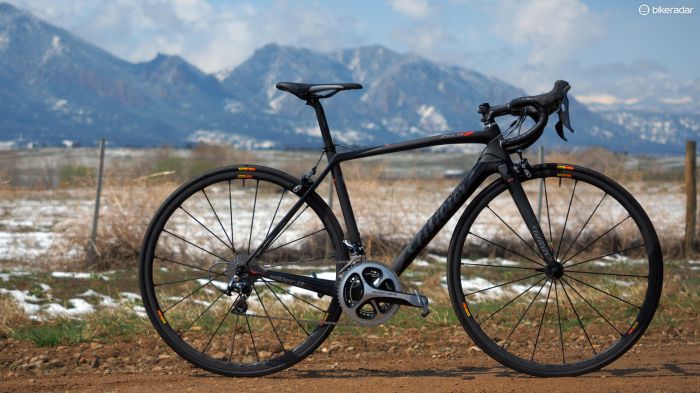
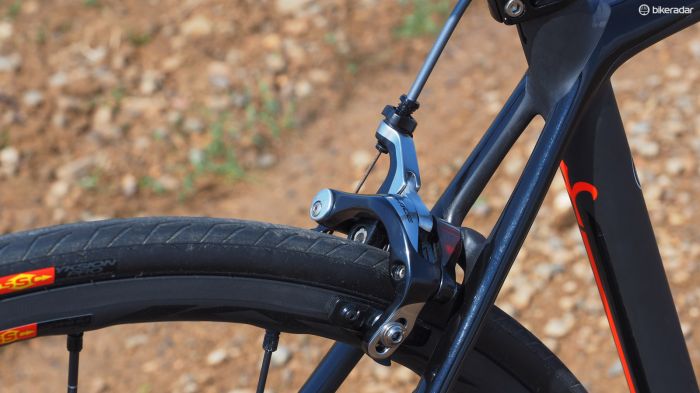
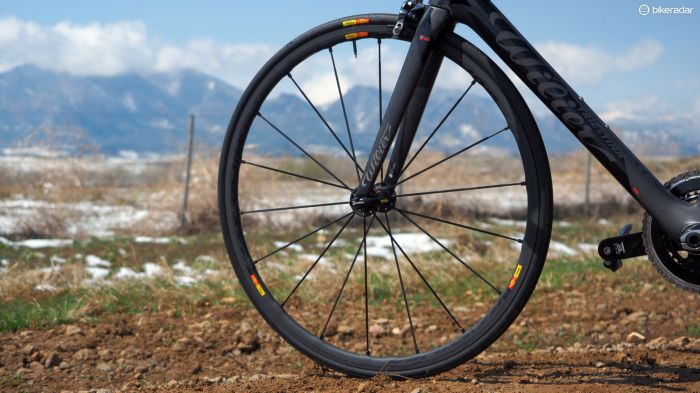
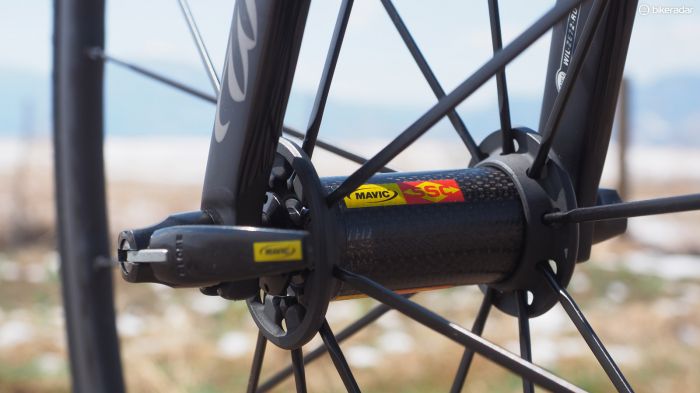
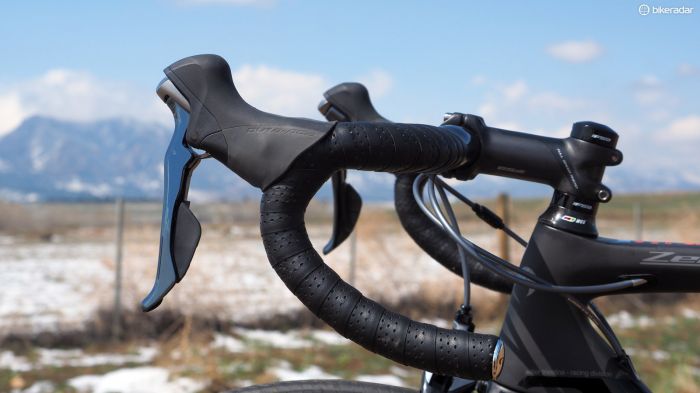
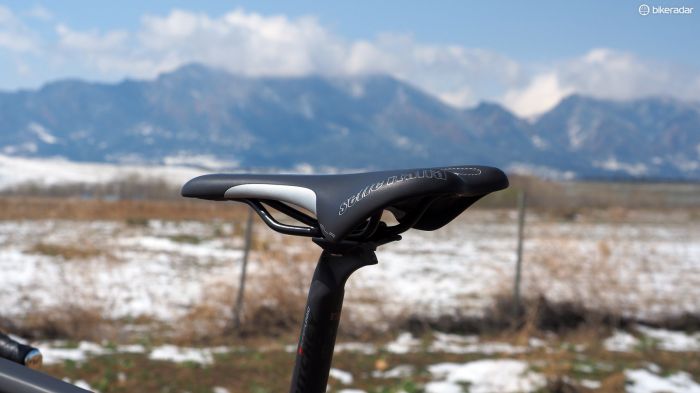
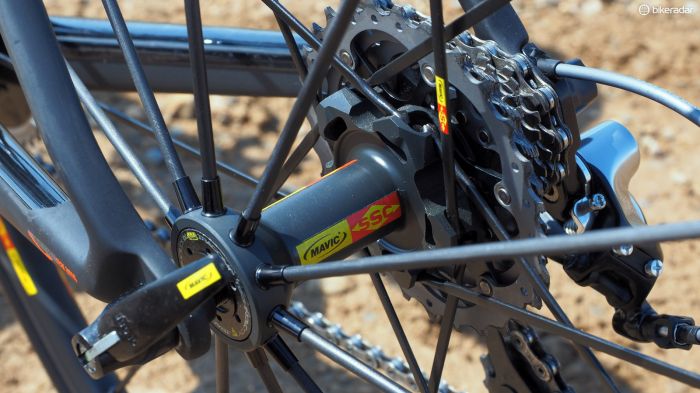
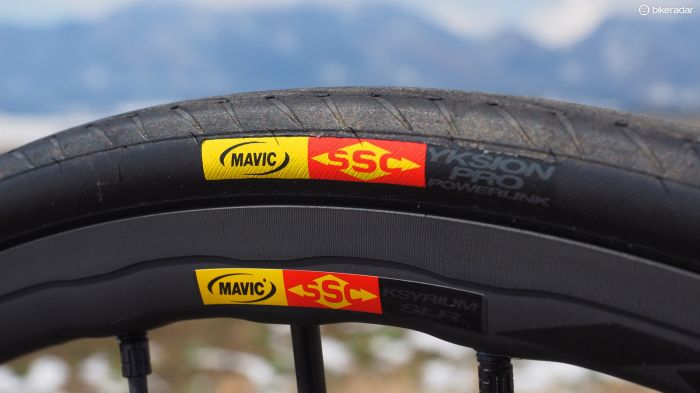
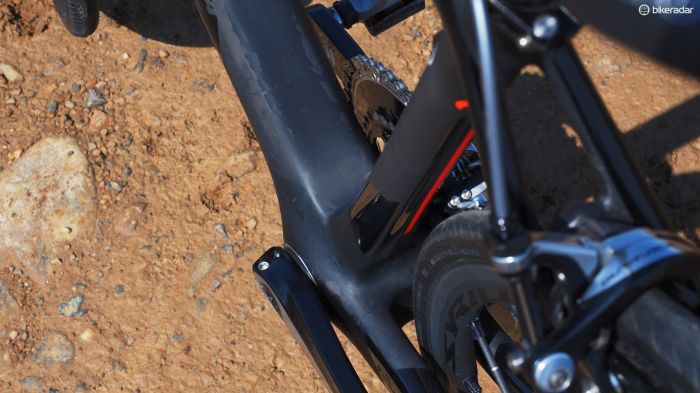
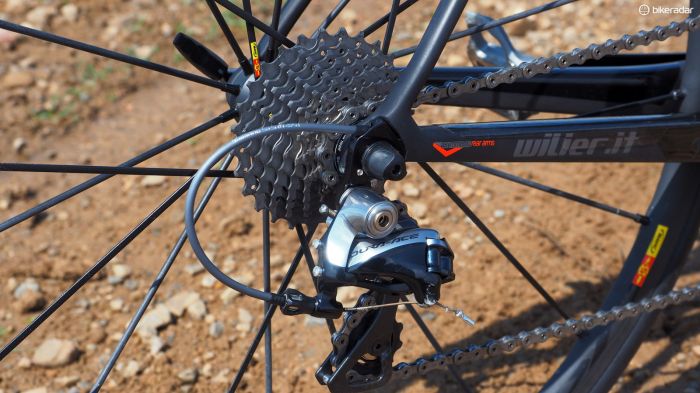
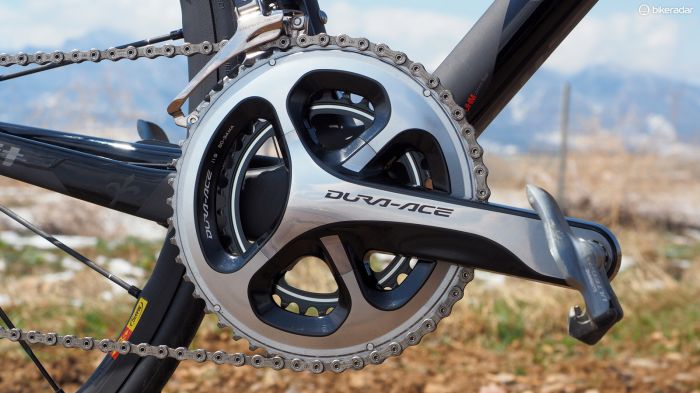
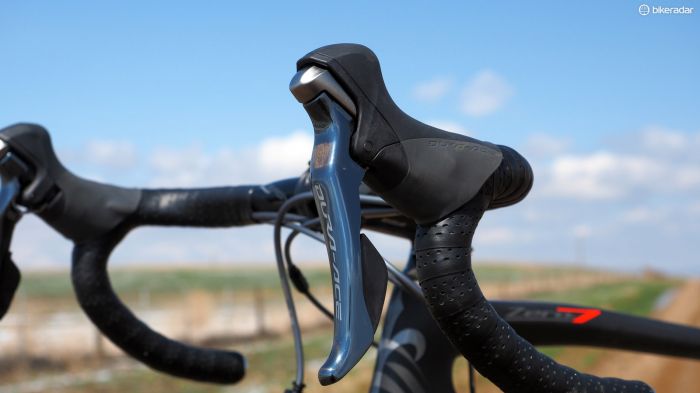
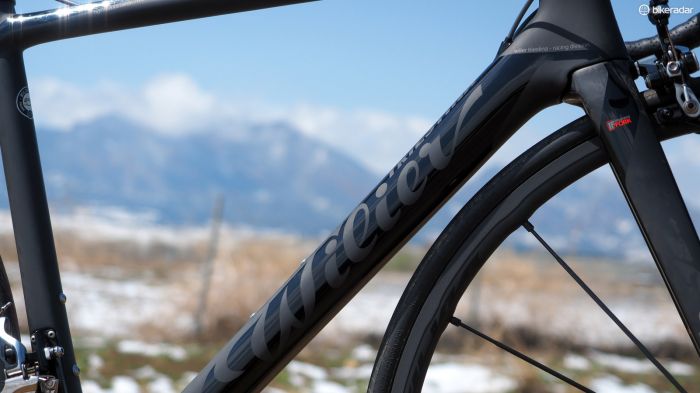
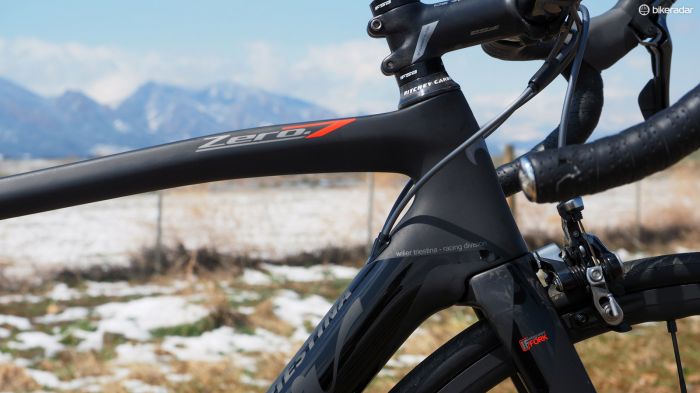
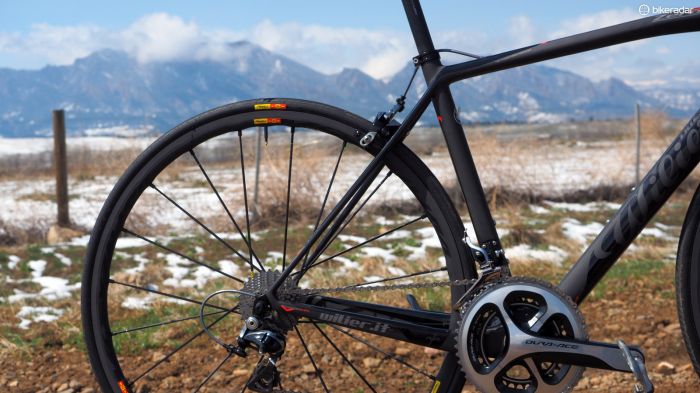
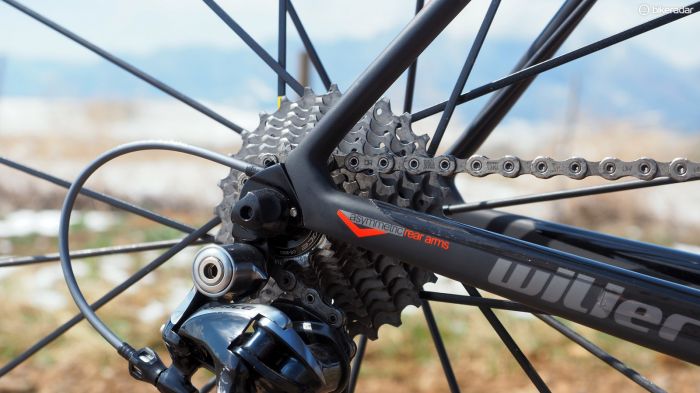
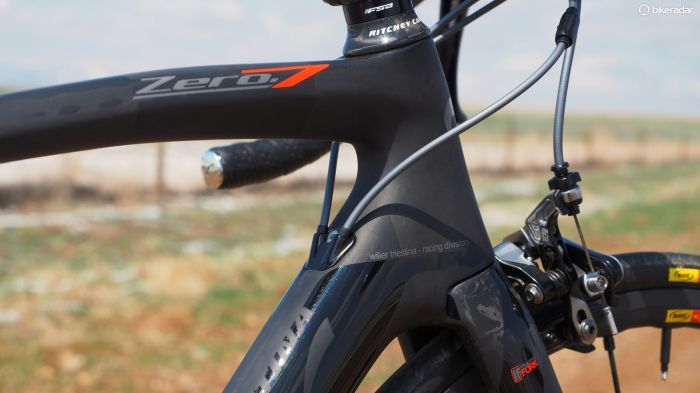
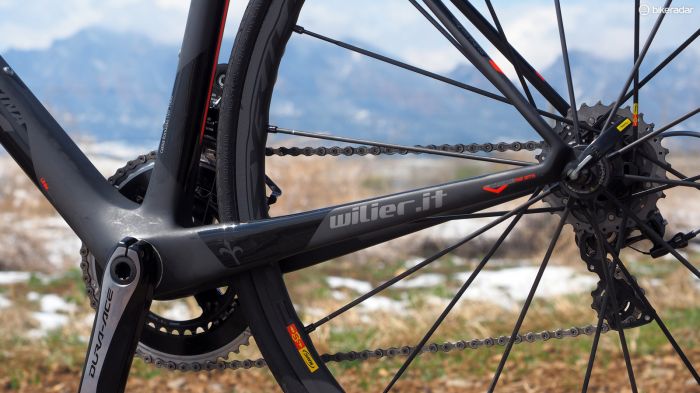
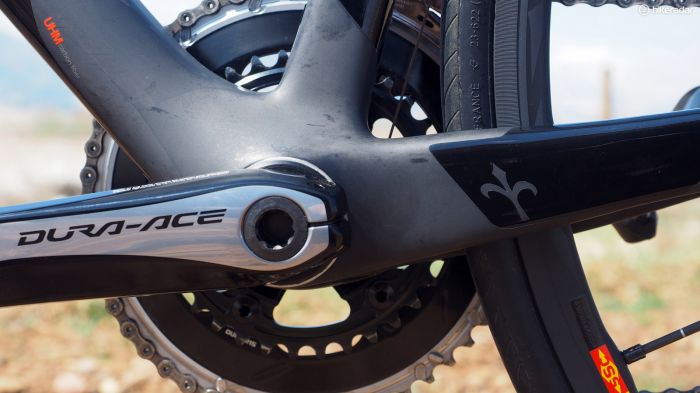
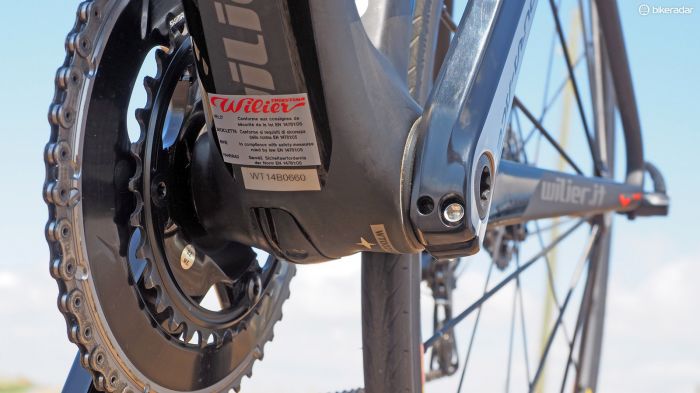
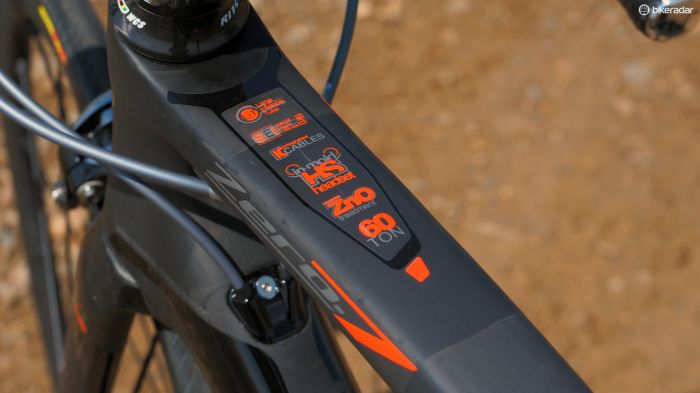
This article originally appeared on BikeRadar
Aerodynamics may be the hot topic in road bike circles these days but when it comes to climbing – especially steep climbing – there’s still no substituting the feel of a bike that’s ultra light and mega-stiff. The Wilier Triestina Zero.7 certainly checks both of those boxes and as it turns out, it’s not half bad when the road turns back downhill, either.
- Highs: Ultra-low weight, fantastic stiffness, do-no-wrong handling
- Lows: Somewhat rough ride, ear-piercing brake howl, narrow rims and tyres
- Buy if: You live for climbing
Ride and handling: up, up, and away
The key to fast climbing has remained constant since the advent of cycling: lots of power and low weight. The Zero.7 certainly takes care of the latter with an actual weight of just 6.42kg (14.15lb, without pedals) – and that’s with quite a bit of breathing room to go lighter, too.
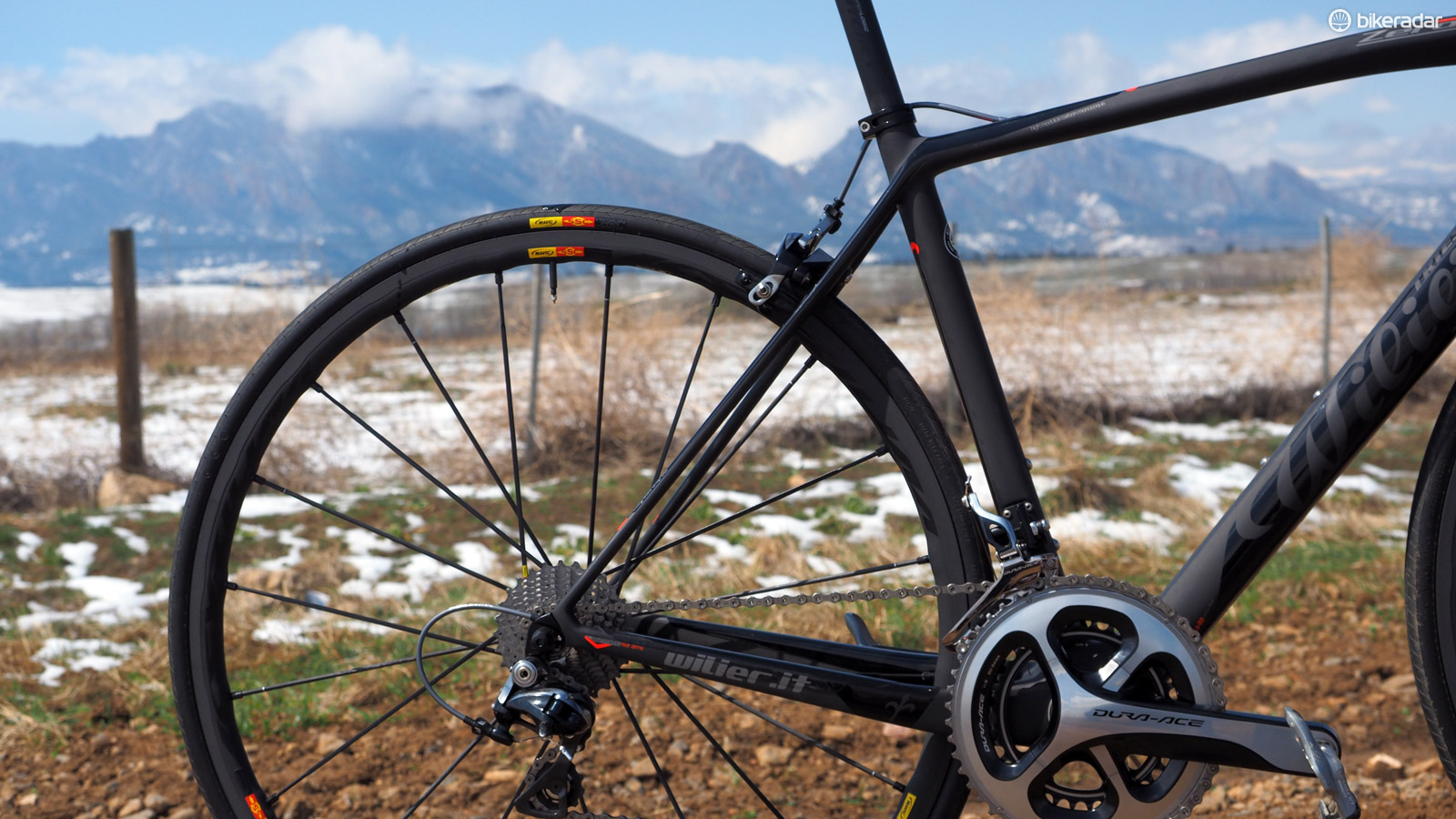
Big and round main tubes, tall chainstays, and high-grade carbon make for an ultra light and stiff chassis
Now, the bike obviously can’t do anything to directly increase your power but lots of stiffness can at least make it seem like you’re making the most of what you’ve got. The Zero.7 ably handles that department as well with a chassis that’s admirably stiff, snappy, and stout. Rise up out of the saddle and swing the bars side to side and you’re met with the torsionally rock-solid front triangle. Likewise, mash the pedals as hard as you can muster and there’s no sense of rear-end wag whatsoever.
Regardless of what your actual output is, this thing feels like it was just born to go uphill.
Further helping matters in the uphill department are the low-inertia Mavic Ksyrium SLR wheels and wide-range gearing with plenty of smaller ratios to help maintain an efficiently high cadence.
All this isn’t to say that the Zero.7 is a one-trick pony. Once you’ve crested the top and start accelerating down the other side, you’re rewarded with Wilier’s usual confidence-inspiring handling that’s both stable in a full tuck and carves through corners with aplomb. Just as that chassis stiffness makes the bike feel quicker going up, it also makes for more predictable manners since there’s so little chassis flex to interfere with your intended course.
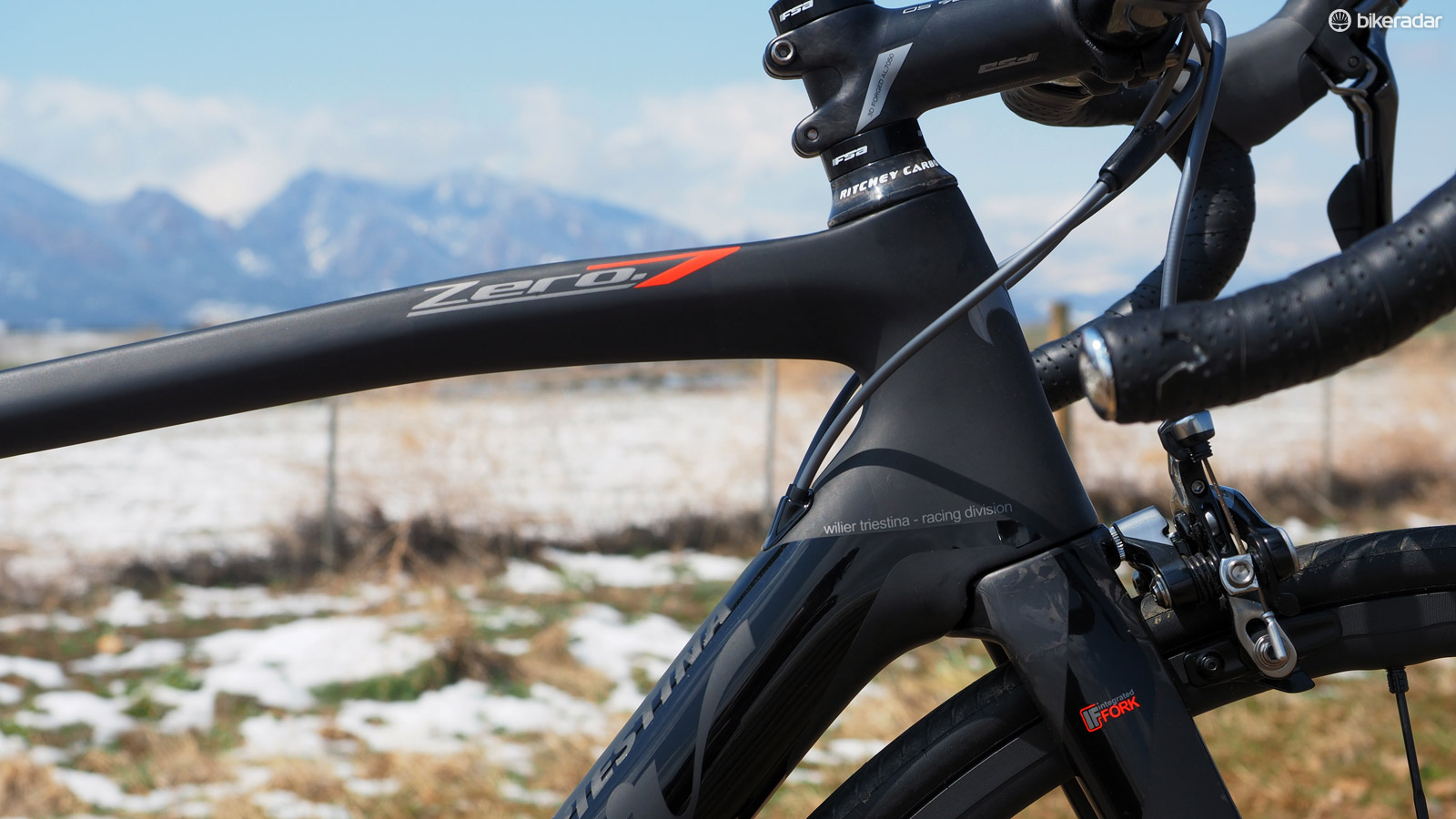
There's no noticeable flex up front when torquing on the bars
Not surprisingly, all this stiffness does come with a penalty. Although the Zero.7 delivers a very nicely damped ride in terms of road buzz and vibration, it’s rather rough and choppy any time the road gets legitimately bumpy – particularly up front. Washboarded dirt roads are especially challenging.
The Ksyrium SLRs' narrow rims and matching tyres that Wilier specs on our particular Zero.7 sample don’t exactly help, either. Actual tyre width is just 23mm, meaning higher operating pressures are a must. On the plus side, there’s ample room for more voluminous rubber with about 34mm between the chainstays and slightly more through the fork crown. Seeing as how wider tyres have been proven to roll faster anyway, we’d strongly recommend going with at least a 25mm-wide setup.
Frame: maximum structural efficiency, aero be damned
As is common with carbon road frames that prioritise low weight and high stiffness, the Zero.7 uses nominally round tube shapes throughout, and huge cross-sections in the main triangle – a proven formula for producing maximum torsional and bending rigidity with a minimum of material. Saving a few more grams is the straight 1 1/8in steerer tube, which doesn't noticeably detract from the frame stiffness, at least in smaller sizes.
Out back are tall asymmetrical chainstays with integrated, hollow dropouts to keep rear-end wag at bay under hard efforts, slender seatstays that at least visually promise a smooth ride, and a big, fat BB386EVO press-fit bottom bracket shell.
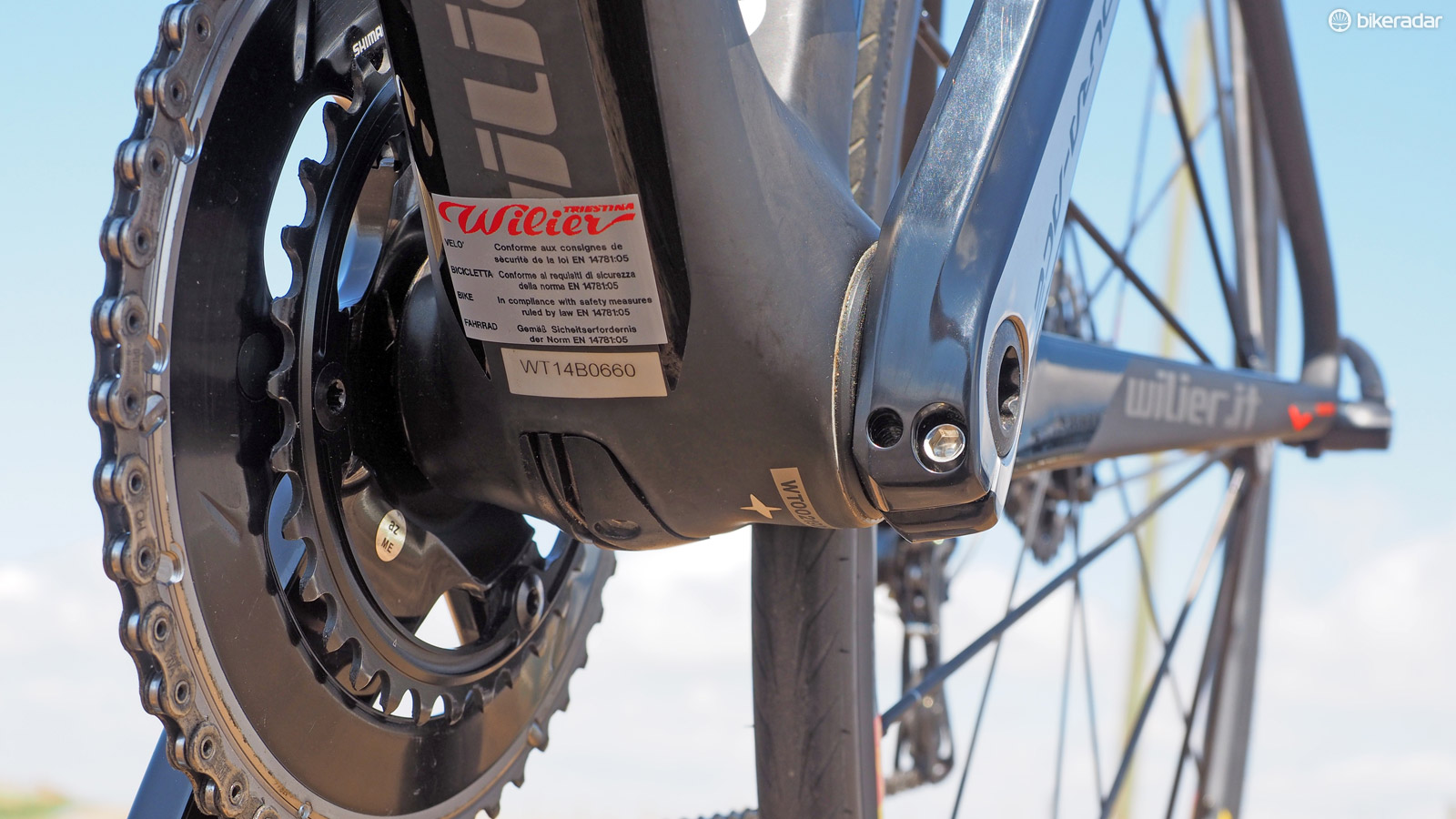
We have mixed feelings on the BB386EVO bottom bracket shell
As is essentially standard fare these days, the derailleur cables and rear brake line are all internally routed and convertible to an electronic drivetrain as needed. To Wilier’s credit, it’s rather neatly done with smooth housing paths and big exit ports that make it only minimally frustrating to replace the cables.
We didn’t suffer any bottom bracket creaking during our testing but given the fit quality of our bike’s plastic cups (which were liberally greased but less than confidently snug, shall we say), we’d be surprised if it didn’t eventually start to audibly complain later. Wilier does at least line the shell with aluminium sleeves, though, and a set of aluminium bottom bracket cups we tried pressed in much tighter – definitely a target for a future upgrade.
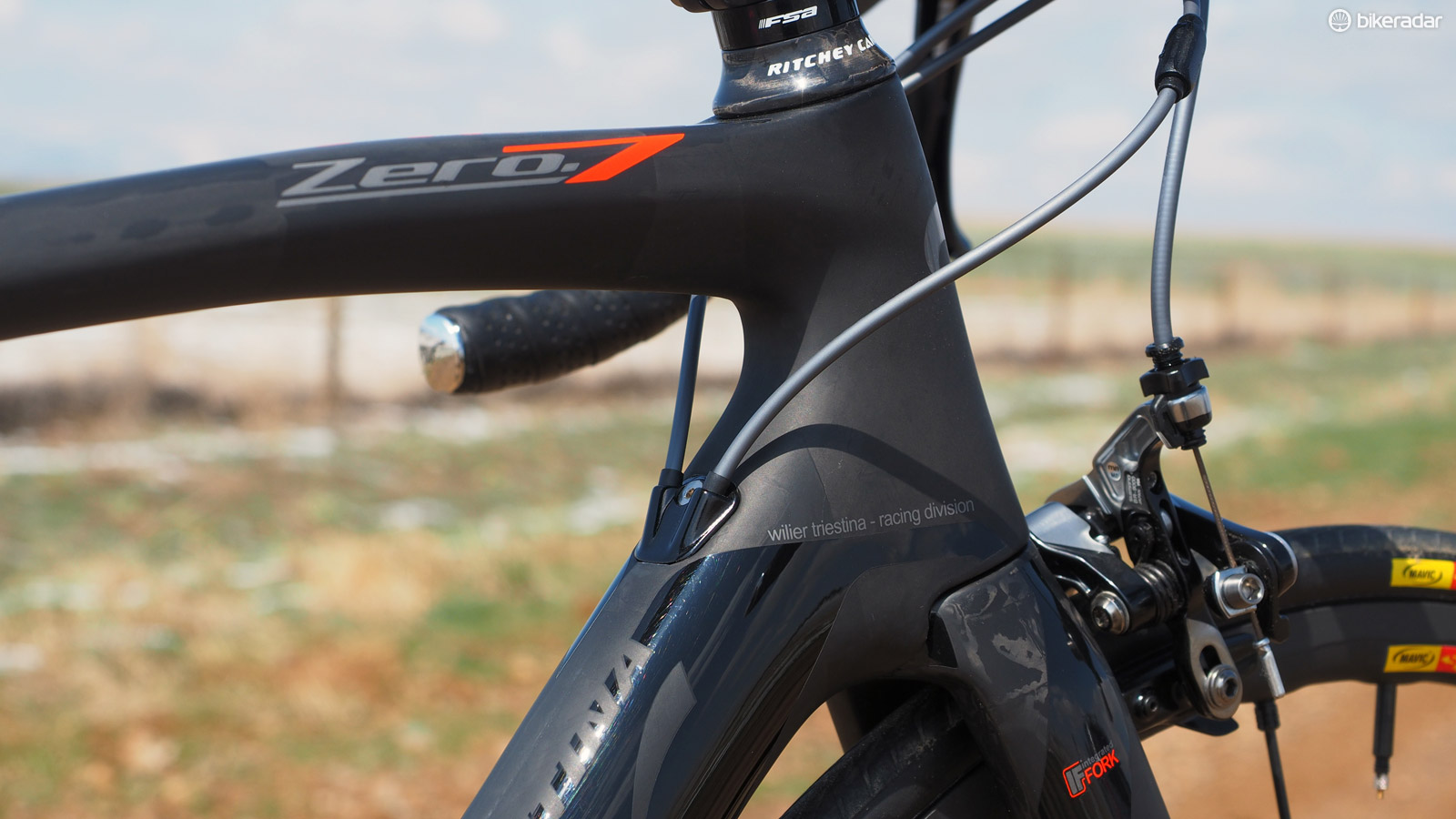
The internal cable routing is rather well done
We’ve occasionally found Wilier’s published frame weights to be on the optimistic side but in this case, things aren’t actually too far off. We measured an actual weight of 849g for a small-sized frame complete with the requisite cable hardware, rear derailleur hanger, seatpost collar, and water bottle bolts – not far off from the 799g claimed figure, which likely refers to a raw chassis with no additional bits bolted on. The matching all-carbon fork is 307g with a trimmed steerer.
Either way, this sucker is seriously light.
Card-carrying members of the ‘everything should be aero’ club will be sorely disappointed, however, as there are no efforts made anywhere in the name of decreasing drag.
Equipment: excellent Shimano Dura-Ace mechanical group, frustrating brake howl
Our tester arrived with a no-nonsense build that included a complete Shimano Dura-Ace mechanical group, Mavic Ksyrium SLR aluminium clincher wheels, an FSA carbon-wrapped stem and aluminium bar, a Ritchey WCS Carbon seatpost, and a Selle Italia SLR saddle.
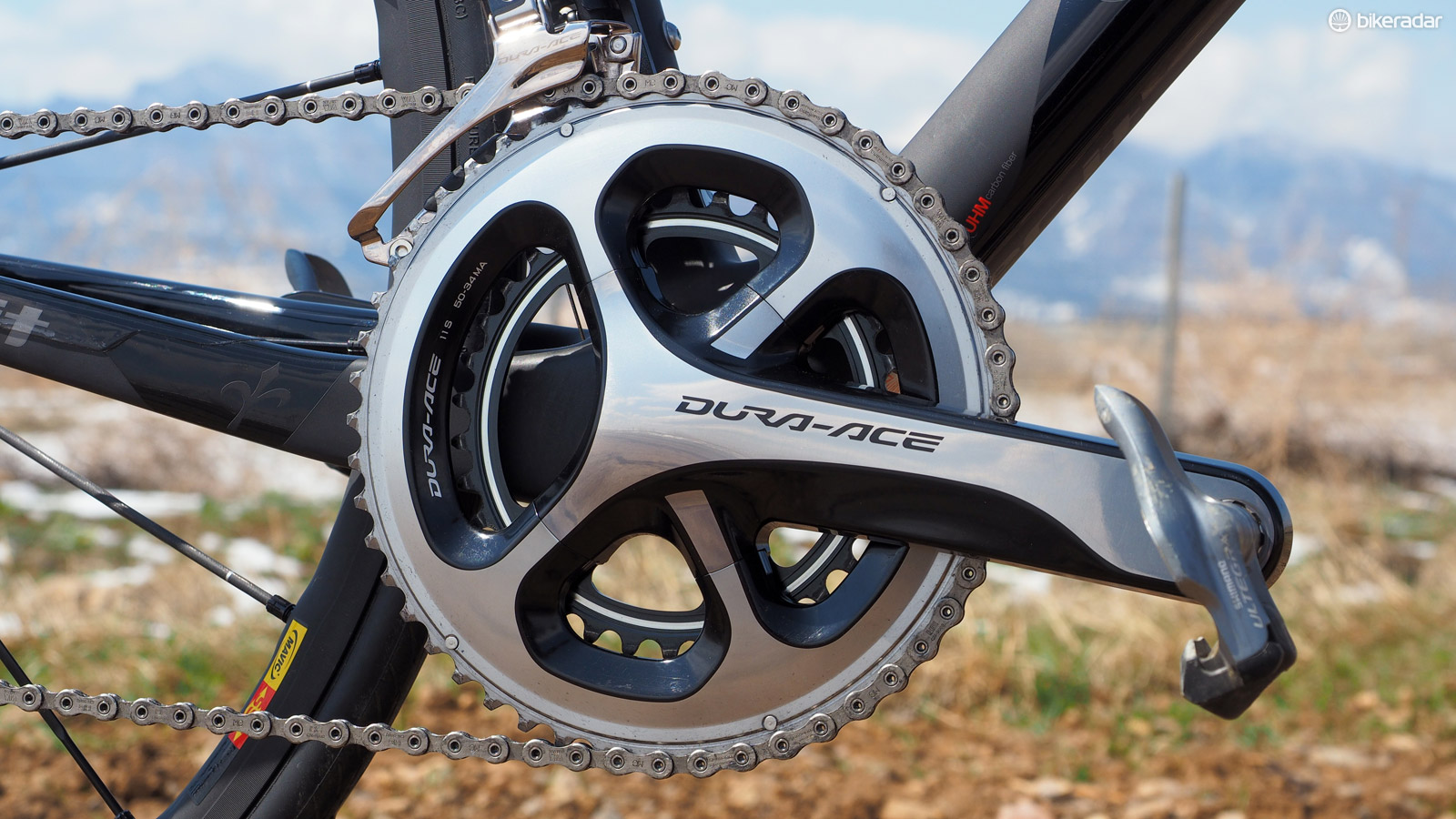
Dura-Ace: yum
As we’ve experienced many times already, there’s little to complain about and lots to praise when it comes to Shimano’s latest Dura-Ace bits. Shift quality is back to the silky smooth and precise feel of the 7800 generation but with greatly improved ergonomics. The rim brake calipers are also arguably the best to come out of any major manufacturer with a similarly light and fluid action, a communicative and solid lever feel, and outstanding power and control.
Likewise, we had no issues at all with any of the cockpit components. The compact bend of the FSA handlebar won’t suit everyone but it’s undeniably comfortable, and the stem and seatpost are quiet, light, and creak-free. Plus, neither slipped despite plenty of abuse on less-than-ideal roads.
Our experience on the Mavic Ksyrium SLR wheels continues to be mixed, however. They’re admirably light (and feel even lighter than the scale suggests), roll with exceptional smoothness, and are freakishly stiff under power. However, the rims’ 15mm internal width is very narrow and works best only with similarly skinny tyres – which is unfortunate since the Zero.7 would ride so much more comfortably with just a little more tyre volume.
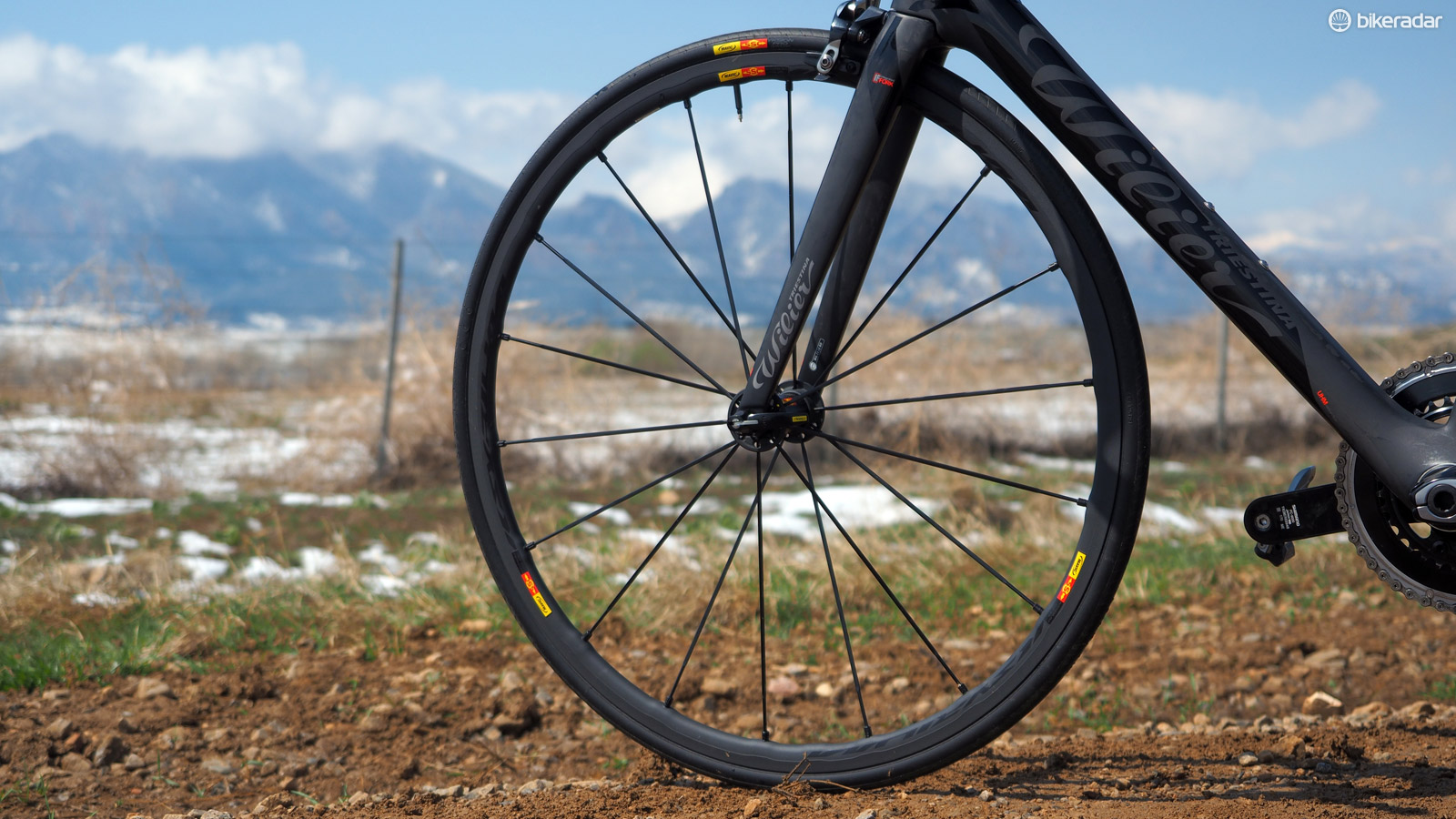
The Mavic Ksyrium SLR wheels are fantastic for climbing but they're quite narrow, not remotely aero, and howl horribly under hard braking
Braking bite on the uniquely textured Exalith 2 sidewalls is exceptionally strong, too, particularly in wet conditions where other rims normally lose much, if not most, of their stopping performance. That said, even moderately hard stops are unfortunately accompanied by an ear-piercing shriek that’s so offensive that we not only found ourselves regularly apologizing to riding buddies but braking early so as not to burst anyone’s eardrums. Toeing in the pads helps some but doing so also concurrently diminishes the braking performance. The noise does abate somewhat with time but in the interim, make sure to bring your earplugs.
The verdict
Summing up the Wilier Triestina Zero.7 is simple. Love to climb? This bike is for you. Just be sure you’re okay with your wallet getting appreciably lighter, too, because this thing sure isn’t cheap – nor is it even remotely a good value. It's a fantastic bike but given the price, we expect more than aluminum clincher wheels, an aluminum bar, and a mechanical drivetrain.
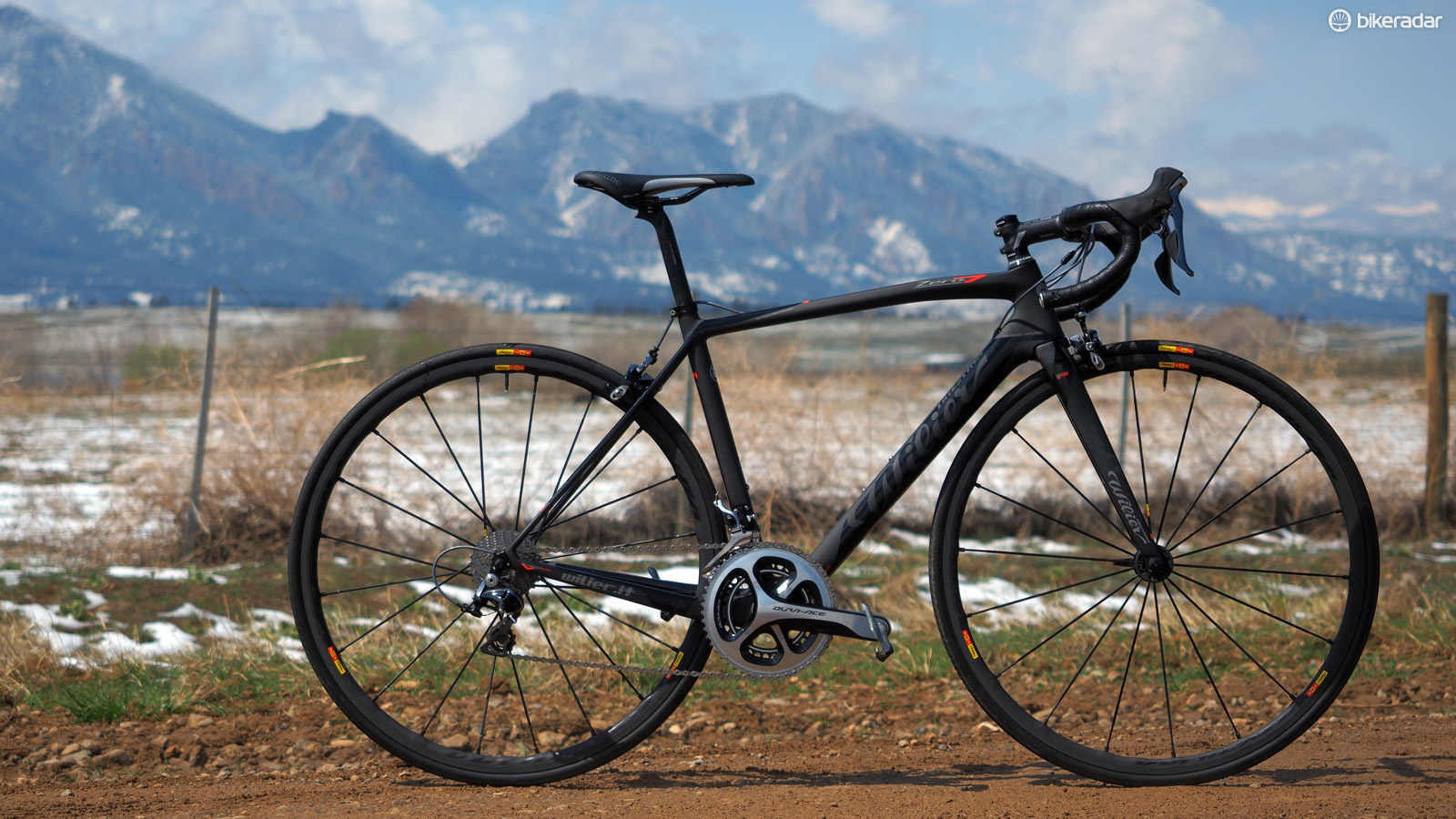
Complete bike specifications
Frame: Wilier Zero.7, size S
Fork: Wilier Zero.7
Headset: Ritchey WCS Carbon Drop-In, 1 1/8 to 1 1/2in tapered
Stem: FSA OS-99 Carbon
Handlebar: FSA Energy Compact
Tape: Wilier
Front brake: Shimano Dura-Ace BR-9000 w/ Exalith-specific pads
Rear brake: Shimano Dura-Ace BR-9000 w/ Exalith-specific pads
Brake levers: Shimano Dura-Ace STI Dual Control ST-9000
Front derailleur: Shimano Dura-Ace FD-9000
Rear derailleur: Shimano Dura-Ace RD-9000
Shift levers: Shimano Dura-Ace STI Dual Control ST-9000
Cassette: Shimano Dura-Ace CS-9000, 11-28T
Chain: Shimano Dura-Ace CN-9000
Crankset: Shimano Dura-Ace FC-9000, 50/34T
Bottom bracket: BB386EVO-to-24mm, press-fit
Pedals: n/a
Wheelset: Mavic Ksyrium SLR
Front tyre: Mavic Yksion Pro GripLink, 700x23c
Rear tyre: Mavic Yksion Pro GripLink, 700x23c
Saddle: Selle Italia SLR
Seatpost: Ritchey WCS Carbon
Price: £6499 / US$9499 / AUS$N/A